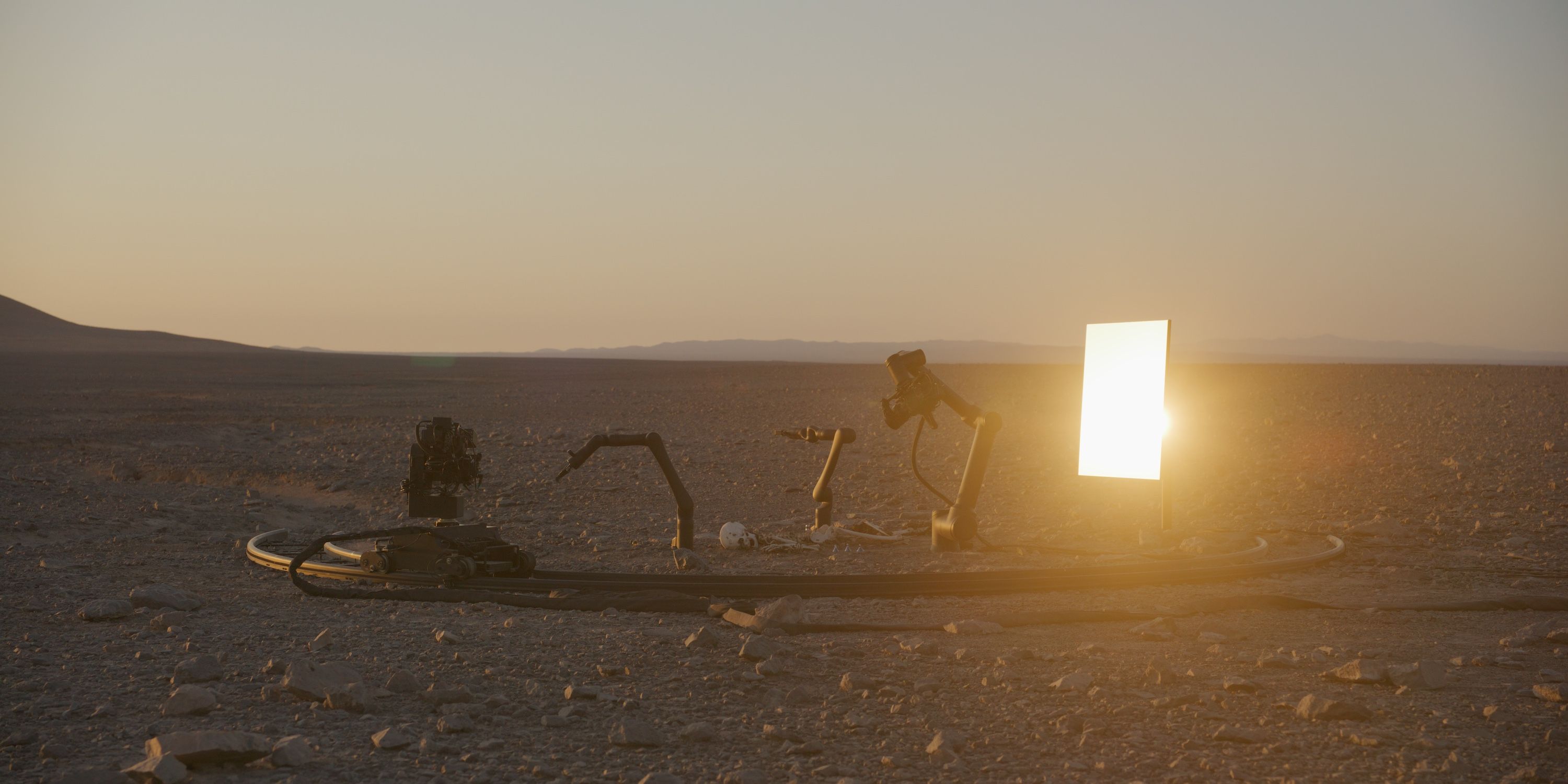April 8–May 14, 2011
Coming from a conceptual background with little connection to anything that moves, I have long been trying to understand what is at the core of the definition of the cinematic. The shattered space full of tiny wood objects, naïve drawings, photographs, photocopies, and roost-like structures for watching and listening to video projections, which constitutes Neïl Beloufa’s exhibition, opened the possibility of giving meaning to just such a word.
The gallery space is fragmented into irregular areas, many of them defined by minimal thresholds, such as delicate wooden structures or thin MDF half-walls. (One day someone will reflect upon the artistic use of the fiberboard on the early millennium and its symbolic value). Large, flat, green-painted surfaces prevail, and the inclusion of such impenetrable elements is a recurrent motive in many of Beloufa’s installations. In the guise of the blue-screen (which, in this case, is green) against which action is shot in the movies so that it can be superimposed by other sets, these green layers constitute a background that is not meant to exist—it is, in fact, an element that prepares our acceptance of filmic illusion or, rather, reinforces our acceptance of illusion, even in unlikely and technically imperfect cases. This “secondary mimesis” is that dispositive of making us believe in what we are presented with and what unites a film by Ed Wood with a documentary of Frederick Wiseman and what creates—literally and figuratively—the setting of this exhibition.
Actually, reflecting upon the relation between the production of images and the production of lies remains constant to the whole show. The central piece, Sayre and Marcus (2010), is a three-channel video depicting young, male Americans seated in a circle, guessing who is the murderer in the group. Around them, a blonde girl and a dog appear like figurants on the set, as they seem deprived of any other function than to add an additional presence to the group. Actually the girl could be a set assistant and the dog seems to belong to one of the youngsters, by the way he stares at him. Could they be Sayre and Marcus? Who knows. The disquieting music and the slow, circular camera movement enhance the mysterious atmosphere and produce such suspense that it makes it difficult for the viewer to understand that these fellows are only playing a game.
Many other elements in the exhibition generate a similar feeling of incapacity to comprehend what is presented, such as the groups of mini-sculptures. A set of tiny wooden blocks appears like the remains of a small shattered sculpture. However, its title The band was crazy (2011), turns them into a De Stijl-like, minimal and geometrically abstract composition. Trying the new skating rink (2011) has the same allusive power, as some little pieces of wood and iron are displayed as to form a childish mise-en-scène of its title. Equally, Beloufa uses photography in a manner that forces the depicted into a misty area of uncertainness or of confusion: a delicate round, planet-like form is in reality a magnified chicken nugget (The last one, 2011) while two images of the same interior are morphed as to enhance a photographic error.
Indeed, in delivering such generous, often humorous and interdisciplinary reflections about the essence of the cinematic matter, it only makes sense that Beloufa (born in 1985) comes from a background of Film Studies. He recently attended the school of Le Fresnoy, an academy where an elite few follow a rigorous training based on a full-on experience of living out, researching on, and thinking about various aspects of the moving image and its relation to space, in an isolated location in northern France. Centuries of exhibition-making have proved how only the display can turn the act of presenting into a proper show—but not many exhibitions are capable of doing so or of generating such an intricate dialogue between single works, support structures, space, spectator’s gaze and presence, as in this case.
















